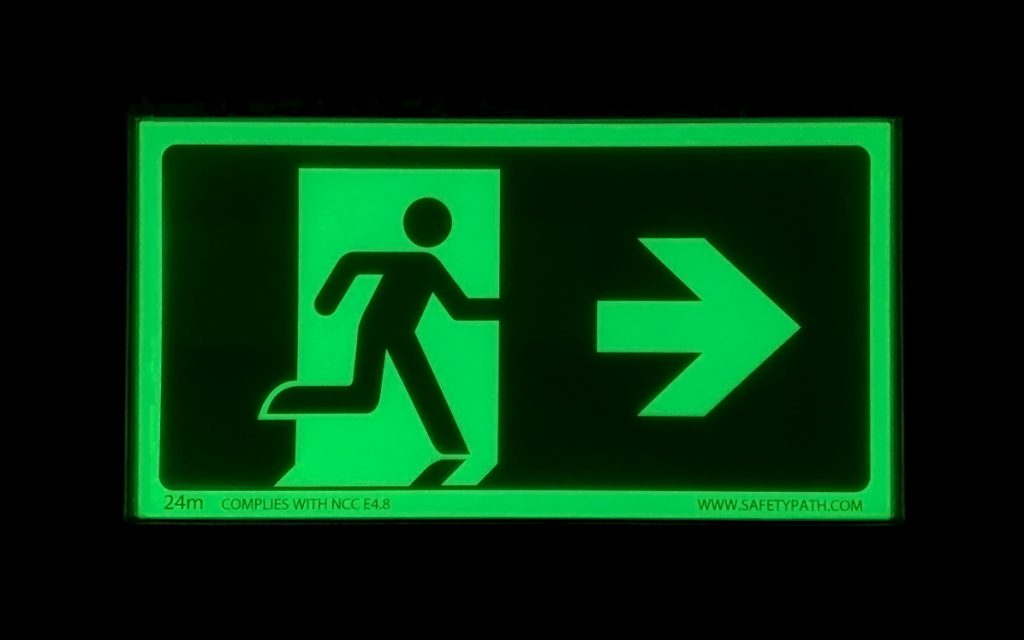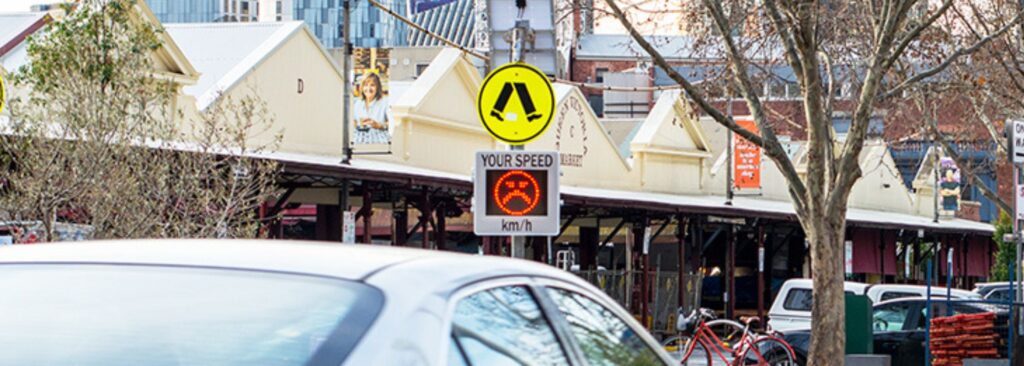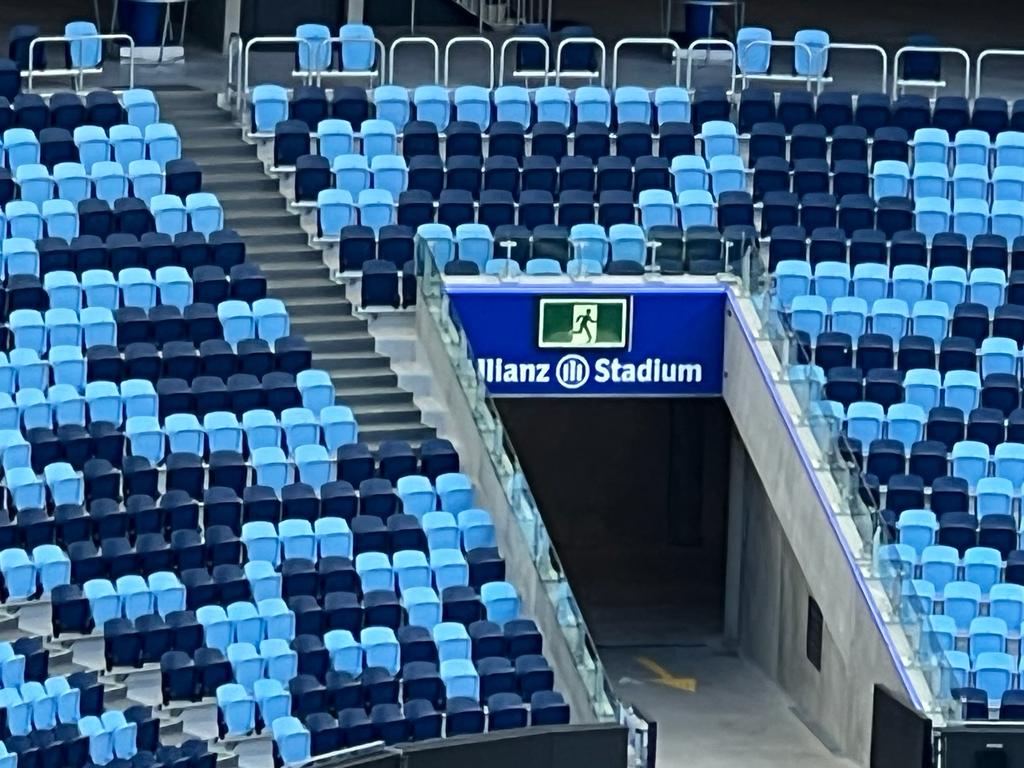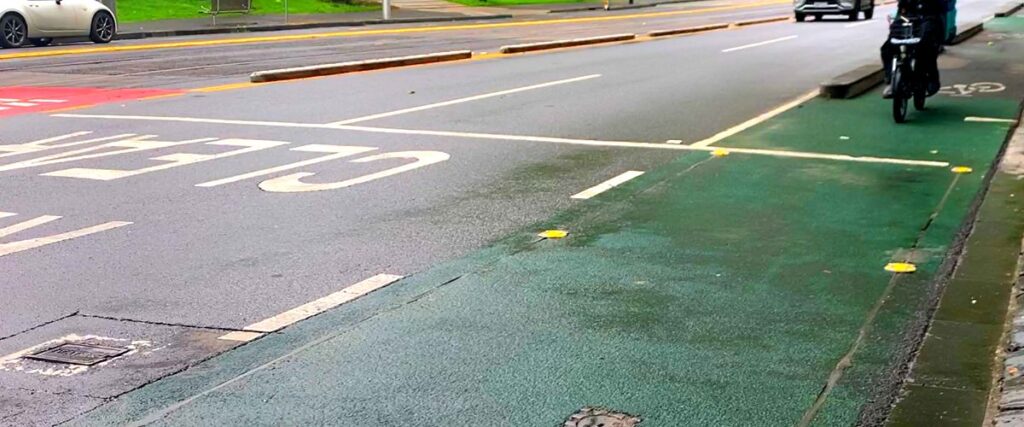
Discover the hidden costs of electric exit signs
3 minute read
November 8, 2021
The exit sign is mandated in buildings across Australia. Specified in the National Construction Code of Australia and required by State Legislation their purpose is to guide people to an exit when a buildings power has failed such as in an emergency. But choosing the wrong exit sign technology you become locked into years of hidden costs to your business and the environment. Discover the hidden costs of electric exit signs.
The problem with electric exit signs
Old electric exit signs consume electricity and generate emissions 24/7. When mains power fails, most use a battery to remain illuminated for 90 minutes. Some have backup power supplies.
The batteries in old style electric exit signs may only last 3 to 5 years before they need to be replaced. Because of the inherent unreliability of the technology, old electric exit signs need 6-monthly electrical testing to ensure they will remain illuminated for 90 minutes after a power failure.
Large facilities with hundreds, or even thousands, of electric exit signs often use a software management system so that the building manager is automatically notified when a connected electric exit sign fails. To implement a management system requires more expensive electric exit signs with networking capability, the installation of the wired or wifi networking and the licensing costs of the software. The software alerts the building manager of failed electric exit signs, ensuring they’re replaced faster with yet another more expensive network-capable electric exit sign.
How many electric exit signs are there?
You may think there’s not many of them. But there are. There’s at least two to four on each floor of a building but sometimes many, many, more. They’re on every floor of nearly every commercial, industrial, government and other non-residential building across Australia, plus multi-story residential buildings like apartment towers. There’s possibly hundreds of millions of electric exit signs across Australia.
Each exit sign generates around 79 kilograms of carbon dioxide equivalents and consumes up to 88 kilowatts of electricity per annum. When they fail, each electric exit signs is eWaste, requiring hundreds of millions of batteries to be disposed of every 3 to 5 years.
What are the hidden costs of exit signs?
There are many hidden costs when you use electric exit signs:
- electricity
- installation by an electrician
- replacement by an electrician
- 6-monthly electrical inspections for 90 minutes
- more expensive network-capable electric exit signs
- computer building management system licensing costs
- disposal of electric exit signs as eWaste.
Then there’s the environmental costs:
Discover the hidden costs of electric exit signs – and what you can do about it
What is the alternative?
Is there an alternative exit sign that doesn’t require electricity, doesn’t generate emissions, and lasts five to six times longer?
An exit sign that is fully recycleable, cheaper to maintain, and meets the performance requirements of the National Construction Code (2019) of Australia?
There is. The Safety Path Exit Sign. An environmental exit sign.
The Safety Path environmental exit sign replaces the electric-battery with a photoluminescent wafer that stores light, not electricity.
The Safety Path environmental exit sign emits light when it’s needed. Without batteries. Without emissions. No eWaste.
Where there’s not much light, like service corridors or rooms with sensor activated lights, the Safety Path Hybrid LED Exit Sign has a high-efficiency LED to charge the photoluminescent wafer. It still doesn’t require an electric-battery and uses a tiny amount of electricity compared to old electric-battery exit signs.
Safety Path Environmental Exit Signs use Australian research and development. The signs are made for Australian regulations.
Safety Path Exit Signs are being installed across Australia in new buildings, reconditioned buildings and whenever a failed electric exit sign is replaced.
When will you make the change?
Call 1300 244 569 or email us to find out more.



